How to Safely Set Up a Generator Fast
4 steps to ensure the safe operation of your portable generator
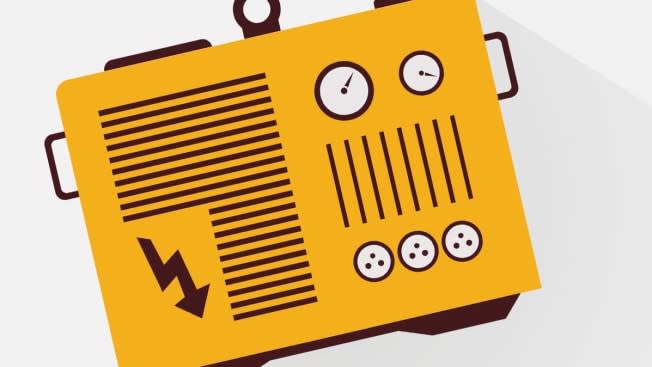
By Paul Hope and Tobie Stanger
If a big storm knocks out your power and you haven’t had the opportunity to install a transfer switch—a device that enables the safe delivery of auxiliary power to your home’s circuits—you’ll need another way to connect a portable generator. When you do, you’d be wise to take precautions to ensure that the power source you introduce to bring your lights back on doesn’t end up endangering yourself or your home.
Rule No. 1 when hooking up a portable generator: Don’t take shortcuts. They can be dangerous and even lethal. And as desperate as you may be to get your hard-wired stove or furnace back in operation, don’t attempt to feed generator power directly into your home’s electrical system without a properly installed transfer switch or interlock device on your breaker panel.
“The last thing you should be doing is trying to connect your generator to the breaker panel yourself, especially at the last minute and in a rush,” says Misha Kollontai, the CR engineer who leads generator testing.
What’s more, the Consumer Product Safety Commission (CPSC) recently warned consumers not to buy, use or resell novel male-to-male extension cords, which have been marketed on Amazon and other websites as a way to plug a portable generator directly into a home’s electrical system. These cords, also called “suicide cords” or “widow-maker cords,” are extremely dangerous. Among the risks: Once you plug one end of such a cord into a power source, the opposite end delivers live electricity that can shock or electrocute, the CPSC warns. What’s more, the “backfeed” these cords introduce can circumvent the safety features of your home’s electrical system and cause a fire, as well as pose risks to utility workers dealing with municipal lines outside your home.
Instead, follow our four recommendations below to quickly—and safely—power your home until utility service is restored.
1. Find a Safe Place
Gasoline-powered portable generators produce carbon monoxide gas and can be fatal if used indoors or too close to your home. That CO exhaust is odorless and colorless, and can kill a human or animal within minutes.
The only safe spot to operate a generator is outdoors, at a minimum of 20 feet from your house—with the engine exhaust directed away from windows, doors, air-conditioning units, or other structures. Don’t assume that opening your doors and windows makes it safe to place the generator any closer. That’s not enough ventilation to protect you, the CPSC says.
Driveways, stone patios, and level patches of grass are all good places to put your generator. And if it’s raining or snowing, you’ll need to shield the generator with a generator tent or cover. You can find model-specific covers online, but it’s fine to grab a generic generator tent at a home center, too.
Do not place your generator in the following spaces:
• The garage, even if you leave the door open. Opening doors or windows won’t provide enough ventilation to prevent the buildup of lethal levels of CO.
• An outside porch or carport. The CPSC says that’s still too close to your home.
• Attic
• Basement
• Crawl space
• Shed, or any other building that a person or animal could enter.
Check out the CPSC’s advisory for other post-emergency safety tips.
2. Determine What You Can Power
Without a transfer switch, you can only use a portable generator’s built-in outlets, attached with extension cords to select appliances and electronics. That means you won’t be able to power hard-wired appliances such as a furnace, central air conditioner, or well pump. For that, you’ll need a transfer switch.
To make sure that your generator can handle the appliances you want to power, check out Consumer Reports’ generator interactive.
3. Use Extension Cords Properly
Extension cords can pose hazards, particularly if they’re used outdoors or to carry the load of high-wattage appliances. For maximum safety, check the owner’s manual of each appliance you need to power to see what gauge, or thickness, of cord it recommends. Make sure that the cords are rated for indoor and outdoor use. Check the cord labels for the maximum wattage they’re safely rated to carry. Then make sure those ratings match the ratings of the appliances you plan to power.
Use the thickest extension cords for the appliances that draw the most current—such as a refrigerator or sump pump, Kollontai advises. Thicker extension cords—that is, cords with lower gauge numbers—can handle more current. Devote higher-gauge (thinner) cords to devices that draw less current.
For large appliances, use one extension cord and one generator outlet, Kollontai recommends. For smaller appliances and electronics, like the light by your bedside and your phone charger, you can get away with using a power strip attached by an extension cord to the generator outlet. You also can connect extension cords in a series to get the length you need, but make sure they’re of the same gauge. “If you put two cords together of different gauges, you’ll get the capability of the lower one,” Kollontai says.
Be aware that the farther from the power source you go, the lower the voltage will be for the items you want to power. But don’t place the generator closer to the house than the 20 feet CR recommends. “Your generator is only as good as how many things you can plug in safely,” Kollontai says.
Don’t run the extension cords under rugs or allow them to become pinched in windows or doors. Use a rubber doorstop to prevent doors from closing all the way and crimping the cords.
4. Mind the Fuel
Portable generators run on gasoline, and most can hold a maximum of about 8 gallons. Depending on the power load, that may last only several hours. Stock up on gasoline and store it in ANSI-approved containers, which have special pressure-relieving mechanisms. Mix the gas with fuel stabilizer and store it outside the house.
Don’t fill a generator while it’s operating. “If you spill gasoline by accident across the hot generator muffler, it could ignite," says Jeff Sargent, principal specialist at the National Fire Protection Association in Quincy, Mass.
If you’re shopping for a portable generator, consider a model that can be converted to run continuously on propane or natural gas. You’ll need a conversion kit and perhaps the help of a pro to install it. But the next time you need it, either fuel will provide a more continuous source of power than a few gallons of gas.
New Portable Generator Safety Features
About 85 people a year die from CO poisoning while using portable generators, the CPSC says. Between 2011 and 2021, at least 770 people in the U.S. died. The agency says those figures are probably far greater because it’s still collecting data from 2020 and 2021.
To reduce the risk of carbon monoxide poisoning, some new generators feature a built-in sensor that triggers an automatic shutoff if CO builds up to dangerous levels in an enclosed space, and some also have engines that emit less CO in the first place. Recent test data from CR shows that these safety features are likely to save lives.
Consumer Reports now only recommends portable generators that pass our CO safety technology test. The individual CO Safety Technology score in our ratings reflects our evaluation of the generator’s response to CO in the air around it as well as how much CO it exhausts. Those ratings range from Good to Excellent; generators without a monitor are rated Poor.
But our findings also reveal potentially life-threatening gaps that the automatic shutoff fails to address, reinforcing why it’s critical for consumers to follow the safety guidelines regarding generator placement that are provided above.
5 Safer Generators From CR's Tests
All of these models have potentially lifesaving built-in CO safety technology, which means they shut off when unacceptable levels of CO are detected. They performed very well or excellently in other key tests as well. We’ve listed them from least to most powerful based on the claimed wattage each handles. Some of the models listed here are inverter generators, which are more expensive than traditional generators but run longer, quieter, and more efficiently.
Honda EU2200iTAG
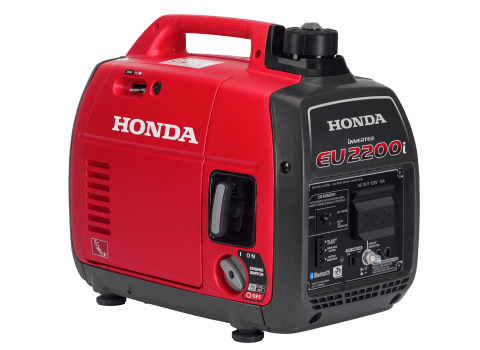
CR’s take: The small, portable Honda EU2200iTAG inverter generator is the best in its class among smaller inverter generators. Claimed output is 1,800 watts; claimed run time is 5 to 10 hours. We found this small generator to be reliable, producing high-quality power—without distortion—earning it a rating of Excellent for power quality. That’s important to avoid frying sensitive electronics, such as a charging smartphone. It’s designed to produce lower CO emissions and is also quiet. But it doesn’t include wheels, which you’ll need to buy separately at $150.
Ryobi RYi4022X
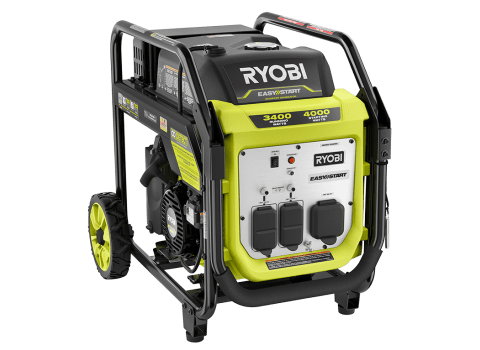
CR’s take: The moderate-sized Ryobi RYi4022X inverter generator is a stellar performer and the only generator in our ratings to earn an Excellent score for CO safety technology. It’s also a CR Best Buy because it’s less pricey than other top-rated inverter generators in our ratings, including the Honda EU3000iS with CO-MINDER and the Echo EGI-4000, both of which score Very Good for CO safety. Though this unit weighs just 85 pounds, it offers an impressive, 3,400-watt output and—conveniently—four power outlets. But it’s short on other features, such as an electric start, fuel gauges, and a low-oil shutoff indicator light.
DeWalt DXGNR4000
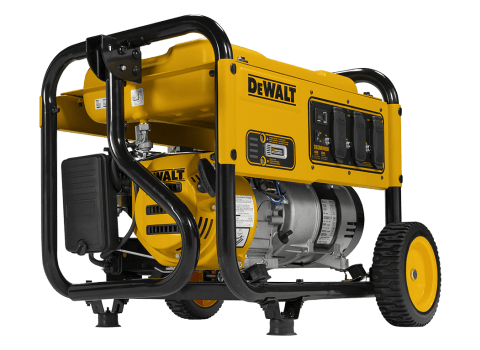
CR’s take: The moderately priced DeWalt DXGNR4000 traditional portable generator has a claimed output of 4,000 watts and a running time of 8 to 16 hours. We found it delivered more than enough wattage to power our test appliances and handled surges very well. And we found it easy to start and transport (for a portable), with some helpful features for starting and operating the generator. On the downside, it’s noisy.
Honda EU7000is with CO-MINDER
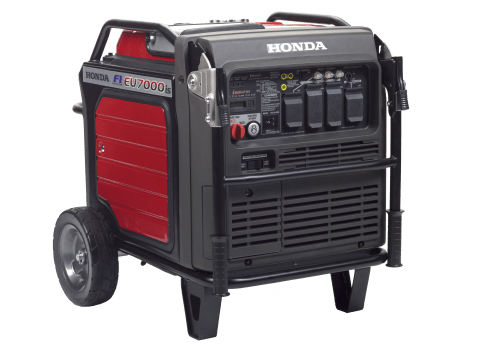
CR’s take: The Honda EU7000is with CO-Minder, with a claimed output of 5,500 watts, is the best large inverter generator in our ratings. It’s quiet, efficient, and exceptionally reliable in its ability to meet fluctuating demands for power—it earns a rating of Excellent for power quality. It uses 8 to 16 gallons of gas a day to power a typical household, about half the amount of fuel that some similarly sized traditional generators use to deliver the same amount of power.
Briggs & Stratton 30728
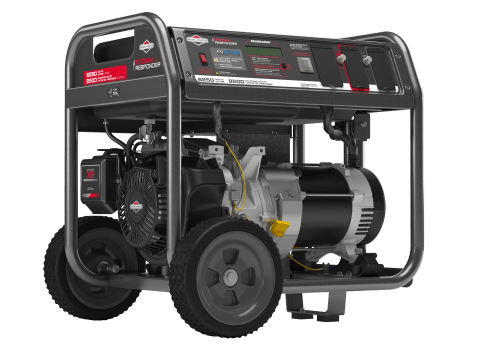
CR’s take: The Briggs & Stratton 30728 is a traditional gas-powered portable generator with a claimed output of 6,250 watts. It delivered more than enough wattage to power our test appliances and handled surges very well. We found it easy to start and (for a portable) to transport. It also offers helpful features for starting and operating the generator, such as a low-oil shutoff that protects the engine from overheating if the oil level dips too low. But it’s fairly noisy, even from a distance. We recommend hearing protection if you’re standing close.
Generator Tips
Damaging storms can happen at any time. On the "Consumer 101" TV show, host Jack Rico learns from Consumer Reports expert Paul Hope how to avoid being left in the dark during a power outage.
More from Consumer Reports:
Top pick tires for 2016
Best used cars for $25,000 and less
7 best mattresses for couples
Consumer Reports is an independent, nonprofit organization that works side by side with consumers to create a fairer, safer, and healthier world. CR does not endorse products or services, and does not accept advertising. Copyright © 2022, Consumer Reports, Inc.

